Watch: What to Know About Jewelry Appraisals
Plus, appraisal expert Mark Cartwright answers the audience questions we missed during the webinar.
In the latest episode of “My Next Question,” experts Gail Brett Levine and Mark T. Cartwright joined Associate Editor Lenore Fedow to shed some light on the world of appraisals.
From how often jewelry should be appraised to the average cost of an appraisal, Levine and Cartwright shared their decades of expertise.
Watch the full session above and join us again for “My Next Question” this coming Tuesday, July 6 at 2 p.m. EDT.
Senior Editor Brecken Branstrator will sit down with Jewelers of America President David Bonaparte to talk about its upcoming National Convention, Gem Awards, and everything else on the trade organization’s schedule this summer. Register at NationalJeweler.com/webinars.
For more on appraisals, Cartwright shared answers to questions we couldn't get to during this week's webinar below.
Q: What are your tips for starting your own appraisal company?
Mark Cartwright: It's like starting any other small business. You need to create an honest, workable business plan that identifies your market, your competition, your finances going forward, etc.
Be prepared to not take home a significant amount of money, initially, since it will take more time than you probably think to develop relationships and market share. But, if it's what you love, it's all worth it. It can get expensive though! And there's help out there with SCORE, the Small Business Administration, etc. to help people starting businesses develop a plan and follow through with it.
Q: Do you have any advice for valuing items for fair market for resale?
MC: First, fair market value may not be the appropriate type and definition of value for that intended use. You need to understand what market level the client intends to try to sell the items into, and you need to recognize and understand the value characteristics, positive and negative, of the items to be able to understand how the client's intended market will see the pieces. Outdated, used jewelry often has a very limited market appeal.
When you do the research, you should explore enough types of markets to find out where items like that most commonly sell. The main difference being that you need to find out from the client how they intend to sell and where they believe they're going to find an audience. After you've done the research, you may have other advice for the client.
Secondly, the critical distinction to make is whether an actual appraisal will serve their interest or whether simply finding cash offers from within the jewelry trade is more appropriate for the client's goals and their items.
I've found that, the majority of the time, the client has no idea how to answer any of those questions, but, as an appraiser with familiarity with the markets in which used jewelry is sold, you may be able to suggest that outdated jewelry in fair condition is most appropriately valued on the basis of the gold and stones at liquidation market levels.
Nobody likes to hear that their treasured heirloom is outdated and worth the break-out value of materials, but, sometimes that's the reality and they come to us as professional valuers for honest answers.
Q: What is a recommended pricing structure for appraisals on items not purchased from your store?
MC: I suspect that only you can answer that question. It's about time and return on your investment in that time.
Typically, jewelry stores don't actually provide "appraisals" within the definition of the term in USPAP. The valuation service most stores provide is really more of an "estimate to replace in our store" rather than an unbiased, independent opinion based on market analysis that includes their store as just one datapoint in the information needed to provide an opinion of value.
If you're going to pull your most high-value employee off the sales floor to provide that service, I'd probably consider not just their direct costs (salary, etc.) but the potential loss of other income by not having them selling inventory during the time they're doing the valuation. Only you can do that math.
Q: Why don’t appraisers have government regulation/certification or licensing as they do for hairdressers?
MC: That's a hotly debated question and has been for years. There are a lot of factors [to consider], such as lobbying against it by jewelry industry groups who don't want to regulate any part of their business. It probably also has to do with the government expense to set up and maintain the infrastructure necessary.
It may also have to do with a general distaste by many people for any government regulation of free enterprise, and part of it probably has to do with the minimal, in the grand scheme of things, financial risk to consumers and the belief that the legal system will and can weed out the bad appraisers. And hey, a bad appraisal is not a good thing, but a bad haircut? That can be devastating!
Q: If the consumer wants to sell the pieces to other individuals, which do you recommend: insurance value appraisal or estate appraisal?
MC: Neither. How pieces are valued for resale depends on the specific pieces, how the client intends to sell, and how quickly they hope to sell.
Most of the time I find that "marketable cash value" based on actual cash offers from reputable dealers who are knowledgeable in the type of pieces and have the money to pay for them (not consignment) will give the client the most realistic information about how much their used jewelry is "worth" in the resale market.
If they intend to sell the pieces themselves to an individual, marketable cash value provides them with a realistic view of the least amount they can sell for. An alternative is "market value for resale" and would usually be based on research of either sold pieces at auction (recently completed sales) or possibly offers to sell by used jewelry retailers that typically carry that kind of jewelry.
Don't get stuck with the idea that the appraisal or appraisal report has to fit into a neat appraisal-type box. We're there to answer the client's value questions and sometimes that doesn't fit into a nice, tidy little pre-packaged box with a convenient label.
Q: What is the future of the appraisal industry?
MC: I think there will be some major changes coming for the jewelry appraisal industry within the next three to five years as far as education is concerned.
I don't think there will be any significant push for regulation from a federal or state standpoint, but I suspect that as insurers and other stakeholders begin to recognize the impact on their financial bottom lines caused by bad jewelry and personal property appraisals that they will begin expecting more education and compliance with recognized standards like USPAP.
If that happens, other industry players may enter the appraisal education scene. We already see some insurers trying to partner with appraisal software providers to try to make the process easier for the insurer, not better for the appraisal client, however.
My experience with most of the pre-packaged appraisal software offered through insurers has indicated that there are significant limitations and potentially serious legal and ethical issues that remain to be resolved, but they're new to the game and things might get better eventually.
The Latest

Set in a Tiffany & Co. necklace, it sold for $4.2 million, the highest price and price per carat paid for a Paraíba tourmaline at auction.

The jeweler’s “Deep Freeze” display showcases its iconic jewelry designs frozen in a vintage icebox.
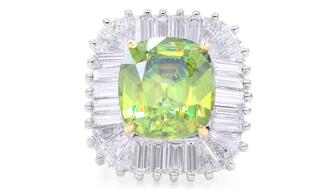
Take luxury gifting to new heights this holiday season with the jeweler’s showstopping 12-carat sphene ring.

How Jewelers of America’s 20 Under 40 are leading to ensure a brighter future for the jewelry industry.

This year's theme is “Unveiling the Depths of the Ocean.”


In its annual report, Pinterest noted an increase in searches for brooches, heirloom jewelry, and ‘80s luxury.

Starting Jan. 1, customers can request the service for opal, peridot, and demantoid garnet.

Roseco’s 704-page catalog showcases new lab-grown diamonds, findings, tools & more—available in print or interactive digital editions.

The 111-year-old retailer celebrated the opening of its new location in Salem, New Hampshire, which is its third store in the state.

The new catalog features its most popular chains as well as new styles.

The filmmaker’s personal F.P. Journe “FFC” prototype was the star of Phillips’ recent record-setting watch auction in New York.

The new location in the Design District pays homage to Miami’s Art Deco heritage and its connection to the ocean.

Inflations, tariffs, and politics—including the government shutdown—were among consumers’ top concerns last month.
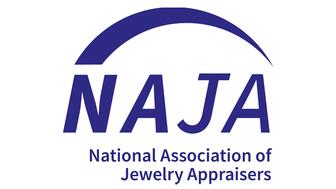
“Longtime favorite” presenters, as well as first-time speakers, will lead talks and workshops at the annual event in Tucson next year.
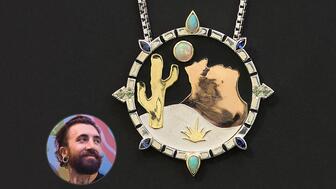
Silas Smith of Meridian Metalworks won the challenge with his pendant that blends Australian and American landscapes.
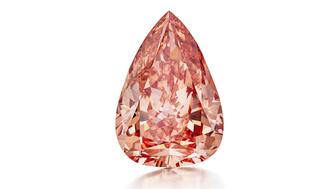
The sale of the 31.68-carat, sunset-hued stone was part of Sotheby’s first series of events and auctions in Abu Dhabi.
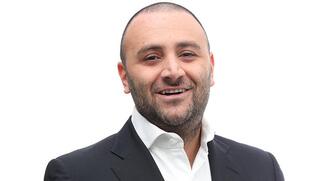
Most customers who walk into your store this month have made up their minds. Your job is to validate their choice, Emmanuel Raheb writes.

The collection features characters and motifs from Ukrainian folklore, including an enchanted mirror and a magic egg.

MatrixGold 3.11, the newest version of the jewelry design program, offers more flexibility, precision, and creative control.

The pavilion will be part of the 2026 JA New York Spring show, scheduled for March 15 to 17.
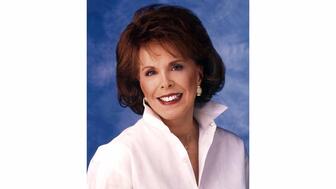
Kadet, a 1994 National Jeweler Retailer Hall of Fame inductee, helped grow the family-owned retailer in the Chicago area and beyond.

Billed as the world’s smallest wearable, Lumia Health’s new smart earrings have a health tracker subtly embedded in the back.
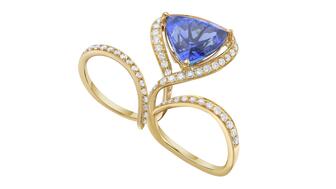
Don’t let those with December birthdays feel blue. Help them celebrate their month with blue zircon, turquoise, and tanzanite.

The new pink sapphire version of the piece dances with its wearer in the brand’s “Icons After Dark” holiday campaign.

A choice that’s generated a lot of commentary, Pantone says “Cloud Dancer” marks a fresh start and encourages relaxation and creativity.
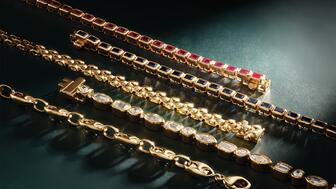
The manufacturer’s holiday campaign features a gift guide filled with trending designs and jewelry that can be personalized.

The man was charged with theft, accused of ingesting the necklace while in a jewelry store in Auckland, New Zealand.























